#joe don rooney
Video
youtube
Rascal Flatts - These Days (Official Video)
#youtube#music.youttube.com#youtube.com#rascal flatts#joe don rooney#jay demarcus#gary levox#00s country#00s country music#2000s country#2000s country music
0 notes
Text
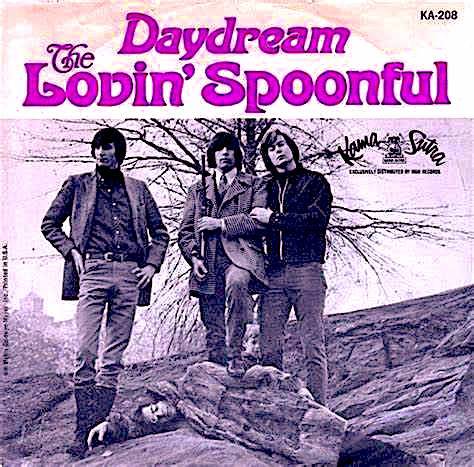
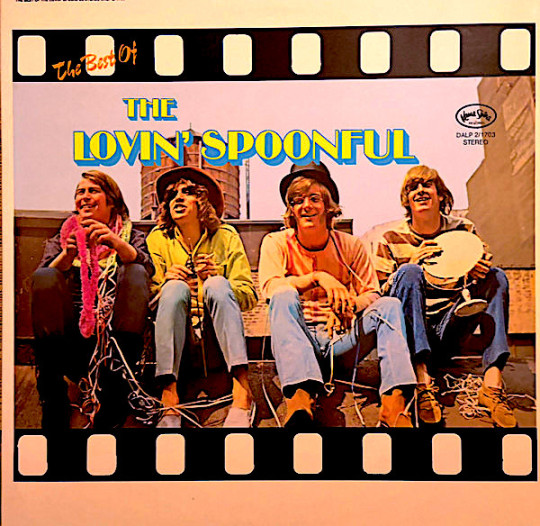
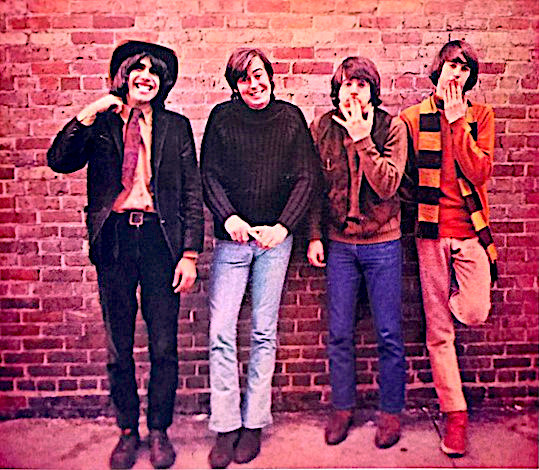


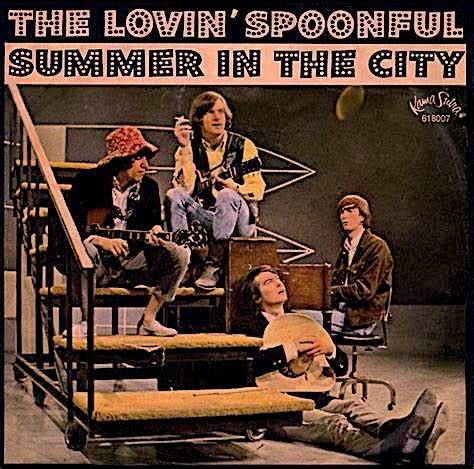
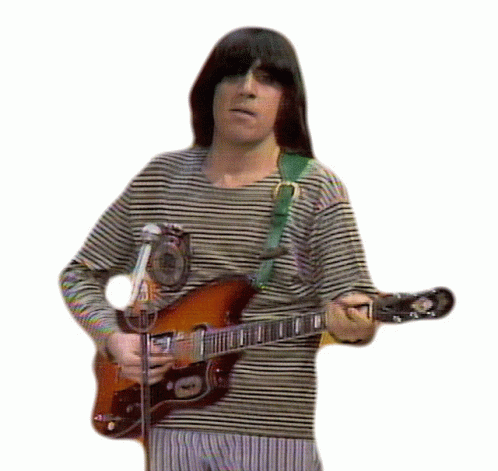

HAPPY BIRTHDAY to my friend and keyboardist Steve Adams, Roy Buchanan, Ray Charles, John Coltrane, Danielle Dax, Ani DiFranco, Jermaine Dupri, Charles M. Gehr, Don Grolnick, Buddy Holly’s 1957 single “That’ll be the Day,” Julio Iglesias, Cush Jumbo, Tim Keller, Tom Lester (“Eb”), John Lomax, the discovery of Neptune (1846), OMC, Paul Petersen, Walter Pidgeon, Mary Kay Place, Aubrey “ Po” Powell (Hipgnosis), Mickey Rooney (good to have met you), Tim Rose, Romy Schneider, the 1994 film SHAWSHANK REDEMPTION, the late Rolf Smedvig (good to have met you), Neil Smith (Alice Cooper), Bruce Springsteen, Jeremy Steig, Soulima Stravinsky, and Steve Boone of The Lovin’ Spoonful. Starting in 1964, The Lovin’ Spoonful rose out of the Greenwich Village folk/jug band scene. Their sound diversified into chamber pop (“She’s Still a Mystery”), country rock (“Nashville Cats”), and the chart-topping hard-edged psychedelic “Summer in the City”—songs penned by their main songwriter, John Sebastian (who later embarked on a long and notable solo career). Beginning in July 1965 with their debut single “Do You Believe in Magic,” the band had 7 consecutive singles reach the Top 10, including “Daydream,” “Did You Ever Have to Make Up Your Mind?” and “Rain on the Roof.” By the mid-60s, The Spoonful was among the most popular groups in the world, and their music and image influenced many rock acts of their era—it is believed that John Sebastian’s wearing of “granny glasses” inspired John Lennon to follow suit. The band migrated from NYC to the Laurel Canyon (Los Angeles) music scene, intersecting with Crosby Stills & Nash, Love, The Mamas & Papas, The Monkees, Frank Zappa, etc. After 1967, The Spoonful went through various line-ups (including a short reformation in the 1979 Paul Simon film ONE TRICK PONY). The current iteration features Steve and long-time members Joe Butler and Mike Arturi. We crossed paths on road gigs a few times—check out this recent clip https://www.youtube.com/watch?v=isTJ3VBL18Q Meanwhile, HB SB and thank you for your years of giving us lovin’ spoonfuls of great and joyful music (photo of the band at a brick wall by Henry Diltz).
#lovinspoonful #steveboone #johnsebastian #joebutler #mikearturi #birthday #johnnyjblair #wildhoney #henrydiltz
#johnny j blair#music#pop rock#monkees#Lovin Spoonful#Steve Boone#John Sebastian#Mike Arturi#birthday#Henry Diltz
3 notes
·
View notes
Photo
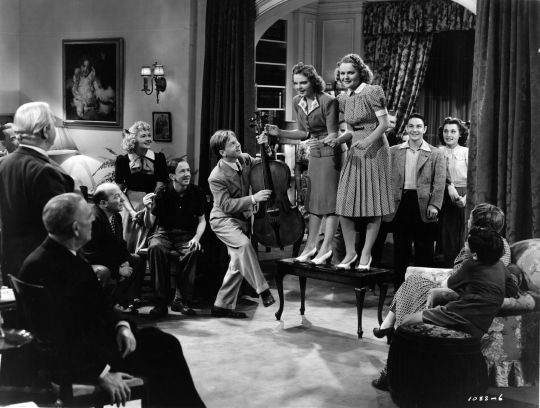
Babes in Arms (1939)
When did the “theater kid” stereotype become a term of dismissal? Through my secondary school days (and this goes for those in secondary education at the present time, too), the theater kid designation was always derisive, to denote classmates too obsessed with musical theater and often keeping to their own clique. Being an orch dork myself in those days, I found myself in an awkward middle ground: understanding fully a theater kid’s love of musical theater, yet a bit intimidated by their devotion to the medium.
The above is a circuitous way to ironically note that I have never been uncomfortable with Metro-Goldwyn-Mayer’s (MGM) hey-kids-let’s-put-on-a-show musicals of the 1930s and ‘40s. Central to that subgenre of musical at MGM were Judy Garland and Mickey Rooney – both embodying, in most of their ten joint movie appearances from 1937-1948, the traits identifiable to anyone who understands how theater kids behave. Their movie musical collaborations contain no narratives of note, just sheer musical and choreographic virtuosity that holds up more than eighty years later. Babes in Arms, directed by Busby Berkeley, is the first of Berkeley’s unofficial “Backyard Musical” series starring Garland and Rooney – later followed by Strike Up the Band (1940) and Babes on Broadway (1941). Having seen only the middle film of that trilogy before, Babes in Arms is the weaker of the two I have completed. But for a roughly ninety-minute romp with puffed-up adolescent drama and a modest budget, Babes in Arms is decent value for those interested in movie musicals and the filmographies of those involved.
It is 1921 somewhere in America. Vaudeville patriarch Joe Moran (Charles Winninger) announces the birth of his only child, a son. Fatefully, his son is literally born on stage. Fast forward to the late 1930s and we find Joe’s son, Mickey (Mickey Rooney) teaming up with girlfriend Patsy Barton (Judy Garland; whose character comes from a different vaudeville family) to sell one of his songs to a music publishing company. He’s on piano; she’s the singer as they perform “Good Morning” (yes, that same song Gene Kelly, Debbie Reynolds, and Donald O’Connor hoofed so magnificently to in 1952’s Singin’ in the Rain). The publishers unsurprisingly purchase Mickey’s song. $100 (more than $2,000 in 2022’s USD) in hand, Mickey returns home to his parents but is aghast to learn that his parents – who left the vaudeville circuit shortly after the 1927 introduction of synchronized sound in movies – are heading back on tour without him. To convince his parents to bring him along, he and Patsy piece together a plan that any spurned child might pursue: to put on a show with the other musically talented kids in the community (deeming themselves the “Babes in Arms”).
Teenage drama ensues including an unnecessary physical assault, a preventable love triangle, and an unfortunate decision to use blackface (more on this later). The cast also includes Grace Hayes as matriarch Florrie Moran, Margaret Hamilton as busybody Martha Steele, Rand Brooks as Martha’s nephew, Guy Kibbee as a judge, and June Preisser as the third side of the aforementioned love triangle with an unfortunate nickname. Betty Jaynes plays Mickey Rooney’s elder sister while Douglas McPhail plays Don Brice, one of the older kids with an underutilized baritone.
Babes in Arms is technically based on composer Richard Rodgers and lyricist Lorenz Hart’s 1937 stage musical of the same name. And though Rodgers and Hart are credited, this film adaptation resembles little of their original work, with only two songs from the stage musical retained for this movie. “The Lady Is a Tramp” appears only in the score, while the title song and “Where or When”. “Babes in Arms” appears as Mickey Rooney rounds up the neighborhood teenagers to march militarily down the roads – crates and (gulp) torches in hand. With even brief quotations of “Ride of the Valkyries” from Wagner’s Die Walküre in the song (2:53 in provided video), these kids, however well-dressed, might be taking on their newest task too exuberantly. “Where or When”, a ballad that few ever seem to mention, is sung beautifully by Douglas McPhail and Betty Jaynes; the inclusion of the little children on their one-quarter or half-sized string instruments is a charming touch. Garland briefly sings “Where or When” too, and one just wishes she could carry the song to its conclusion.
Among the MGM musical entries, most will recognize “Good Morning” (music by Nacio Herb Brown, lyrics by Arthur Freed) during Rooney and Garland’s attempt to sell the former’s song to the publishing agency. This original rendition of “Good Morning” does not have the choreographic mastery as seen in Singin’ in the Rain, but it certainly establishes that easygoing dynamic audiences would see often between Garland and Rooney.
youtube
By the time the film hits the stage show that concludes Babes in Arms, Mickey, Judy, and company will have sung quite the gamut of musical numbers. Separating themselves from most of the soundtrack are “Daddy Was a Minstrel Man” and “God’s Country”. The former (music and lyrics by Roger Edens) opens the stage show and is the first part of a sequence where both Judy Garland and Mickey Rooney don blackface. Blackface, which originated from American minstrel shows in the early nineteenth century, is a theatrical device in which a typically non-black person wears makeup to portray a happy-go-lucky caricature of a black person. This offensive practice predates cinema and serves no useful performative or cinematic purpose – a non-black performer can pay homage to black culture without perpetuating stereotypes, such as applying blackface. Unfortunately, both Garland and Rooney would be in blackface again in the last film of the Backyard Musical trilogy, Babes on Broadway. For some, “Daddy Was a Minstrel Man” and the following song, “I’m Just Wild About Harry” (a 1921 number with music by Eubie Blake and lyrics by Noble Sissle), will be distracting, to say the least. Together, they smash the picture of teenage innocence that (mostly) courses through Babes in Arms.
“God’s Country” is unabashed American flag-waving that proclaims the U.S. as a divinely dynamic nation. Briefly quoting the melody from “Yankee Doodle”, the song – considering that the United States was, at this time, a mostly insular nation that would rather not be involved with the mounting tensions in Europe and Asia – offers some curious lyrics, such as celebrating American freedom with this:
A hundred million rooters can’t be wrong,
So give a hand, give a hand,
Give a cheer for your land,
Where smiles are broader, freedom greater.
Every man is his own dictator.
Even more surprising lyrics appear shortly after that lightly rib the soon-to-be Axis nations:
We’ve got no Duce;
We’ve got no Führer.
But we’ve got Garbo and Norma Shearer.
Got no goose step;
But we’ve got a Suzie Q step
Here in God’s country!
For a movie made before and released after Nazi Germany’s invasion of Poland, this is as strong a criticism as one might expect from a major Hollywood movie at this juncture. Through most of the 1930s, every major Hollywood studio except Warner Bros. heeded the demands and threats of Los Angeles-based Nazi Germany diplomat Georg Gyssling, who suggested edits on certain screenplays to root out any critique of Germany and Nazism. This cinematic appeasement was sweeping, but it appears that Gyssling and his associates missed a small detail in Babes in Arms.
Other than the wall-to-wall soundtrack, the main attraction for Babes in Arms are its two co-stars. Still teenagers, Rooney and Garland were given an adult’s workload. Including both feature films and shorts, Babes in Arms was Mickey Rooney’s ninety-sixth of ninety-eight films of the 1930s. Somehow, Rooney, already one of MGM’s brightest lights thanks to the Andy Hardy series (1937-1958), is abundantly manic and tireless here in his first movie musical. Even in comparison to the exhaustingly hyperactive of mainstream American filmmaking, Rooney’s enthusiasm almost leaps off the screen. For her part, Judy Garland was not a household name yet when she trotted in front of the camera to film Babes in Arms. Her performance is not quite assured here, and any hint of believable romance between her and Mickey Rooney is spotty more often than not in part due to a sloppy screenplay. By the time of the film’s release, The Wizard of Oz (1939) had already been out in theaters for more than a month. History correctly regards The Wizard of Oz as an essential film, but Babes in Arms grossed more at the box office in 1939. Babes in Arms cemented a career 1939 for Judy Garland, which, just before the film’s premiere, also saw her lay her hands and feet in the cement at Grauman’s Chinese Theater.
Director Busby Berkeley (choreographer on 1933’s 42nd Street and Gold Diggers of 1933) made a name for outlandish mass choreography, but his choreographic style fell out of fashion by the end of the 1930s. Babes in Arms is pedestrian work from the master visualist, but it also marks the beginning of lyricist Arthur Freed’s (1943’s Cabin in the Sky, 1951’s An American in Paris) career as an MGM producer. Within the MGM hierarchy, the “Freed unit” was an assemblage, under Freed’s leadership, of actors (many of whom were principally stage actors before signing up with MGM), composers and lyricists, writers, and directors with the express purpose of crafting movie musicals with little executive interference. Babes in Arms does not yet quite contain that artistic freedom of an Arthur Freed musical, but many of the personnel in front of and behind the camera would become key contributors to the Freed unit.
As manufactured and predictable as much of Babes in Arms’ drama might be, I find it still quite watchable. Several statements from Mickey Rooney decades after completing this film perhaps explain why. In any case that the Backyard Musical trilogy comes up in a Mickey Rooney interview, Rooney usually noted how semiautobiographical these films were for himself and Garland. Both came from vaudevillian families; public performance as natural to them as breathing. Garland and Rooney spent much of their lives on a stage – theater kids, if you will – and derived profound happiness from performance. Even when surrounded by disagreeable, perhaps abusive, persons while making these movies (there are indications that Berkeley was difficult towards Garland, who was already enduring MGM head Louis B. Mayer’s cruel barbs regarding her physical appearance), that desire to embolden and transport others remains.
Babes in Arms might not be to the liking of those who still disdain theater kids, nor any of the Backyard Musicals. For others like yours truly, who appreciate the musicality and energy on display but never quite belonged to either extreme, Babes in Arms is lighthearted entertainment, flawed in execution, honestly acted.
My rating: 6/10
^ Based on my personal imdb rating. My interpretation of that ratings system can be found in the “Ratings system” page on my blog (as of July 1, 2020, tumblr is not permitting certain posts with links to appear on tag pages, so I cannot provide the URL).
For more of my reviews tagged “My Movie Odyssey”, check out the tag of the same name on my blog.
#Babes in Arms#Busby Berkeley#Mickey Rooney#Judy Garland#Charles Winninger#Guy Kibbee#June Preisser#Margaret Hamilton#Jack McGowan#Betty Jaynes#Douglas McPhail#Kay Van Riper#Richard Rodgers#Lorenz Hart#Arthur Freed#Nacio Herb Brown#Roger Edens#TCM#My Movie Odyssey
9 notes
·
View notes
Text
Thursday, April 25, 2024: 2pm ET: Feature Artist: Rascal Flatts
Rascal Flatts was an American country music band founded in 1999. Its members were Gary LeVox (lead vocals), Jay DeMarcus (bass guitar, background vocals), and Joe Don Rooney (lead guitar, background vocals). DeMarcus is LeVox’s second cousin, a brother-in-law of country music singer James Otto, and a former member of the contemporary Christian music duo East to West.
From 2000 to 2010, they…
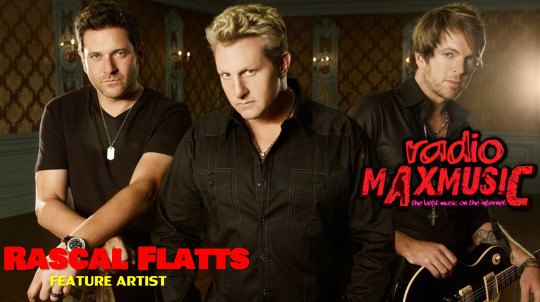
View On WordPress
0 notes
Video
youtube
Ultramagnetic MC's - Poppa Large
From 1992 Album: "Funk Your Head Up".
The Ultramagnetic MCs is a hip hop group made up of Kool Keith, Ced Gee, TR Love, and Moe Love. Tim Dog became an unofficial member in 1989. In 1990, DJ Jaycee was added as Roadmanager and backup DJ. A former member, Rooney Roon, was fired following an assault arrest. Beat-boxing legend Rahzel was also involved with the group early in its career. The group's work was associated with unorthodox sampling, polysyllabic rhymes, and bizarre lyrical imagery.
The Ultramagnetic MCs formed in 1984. Their first single was 1985's "To Give You Love" on the Diamond International label. The group's worldwide buzz started with "Ego Trippin'," its first 12-inch single on Next Plateau Records in 1986 that was the first hip hop song to feature the infamous "Synthetic Substitution" drum break sample. The song is still considered a hip hop classic. The group's next single was "Traveling At The Speed of Thought (Original)"/"M.C.'s Ultra (Part Two)" followed by "Funky/Mentally Mad," one of the most sought-after 12-inch singles of its career. Funky was based on a Joe Cocker piano sample later used as the basis for Dr. Dre and Tupac's California Love. It was released in 1987. This led to the release of the group's first album
The Ultramagnetic MCs released a new school classic in 1988, Critical Beatdown, introducing many new sampling techniques. Many believe that without the group's primary producer, Ced Gee, the golden era of sampling may have looked very different. Ced, while uncredited, also produced the majority of Boogie Down Productions' seminal Criminal Minded. These albums are among the first to use "chopped" samples, rearranged and edited to change context. Both albums also feature many James Brown samples, which became very prominent in Hip Hop in ensuing years. KRS-One has been quoted as saying that he was very close to joining Ultramagnetic MCs early on. Paul C. was also a major contributor to Critical Beatdown, producing "Give The Drummer Some," and engineering most of the album. Paul C. also produced the Hip-House mix of "Traveling At The Speed Of Thought", which was used as the group's first music video, and was their sole release in 1989. The single's b-side, "A Chorus Line", became one of Ultramagnetic's most popular songs and introduced new group affiliate Tim Dog. A variation of the "A Chorus Line" instrumental was used as the basis of Tim Dog's debut single, the Ced Gee-produced "Fuck Compton", which became a modest hit and is credited with helping to spark the East coast/West coast feud of the mid '90s.
The group then disappeared for several years, breaking up temporarily in 1990. They returned on Mercury Records in 1992, with the album Funk Your Head Up. The album received a muted response, in part because many tracks had been given a commercial sheen, having been remixed by outside producers at the label's insistence. Alternate mixes of this album's songs along with unreleased tracks from the sessions have appeared on later compilations. The song Poppa Large, remixed by Da Beatminerz became a hit and remains a staple of Kool Keith's live show. The song's video featured Keith in a straightjacket, his bald head encased in a birdcage.
1993's The Four Horsemen was considered extremely strange though still brilliant, offering a darker, jazzier sound. It featured guest production and vocals by Godfather Don, who produced solo Kool Keith sessions in 1992 during another brief Ultramagnetic breakup. Some of those tracks appear on The Four Horsemen, and also on The Cenobites LP. The former was the last official album the Ultramagnetic MCs released until their 2007 reunion.
There were many semi-legitimate and compilation albums to follow, the most official of which was Next Plateau's The B-Sides Companion, which featured a new song, some unreleased 1989 songs recorded for a second Next Plateau LP and most of the group's classic singles, albeit in newly remixed form. Ced Gee and Moe Love both provided demos and unreleased songs spanning the group's entire career to Tuff City for a series of four albums which were released without Kool Keith's consent. A live album, Brooklyn To Brixton, was announced but abandoned.
As a reaction to Ced and Moe's involvement in the Tuff City releases, Kool Keith and Tim Dog reunited on the album Big Time, released under the name Ultra in 1997. Kool Keith went on to record many solo CDs, including several under aliases such as Dr. Octagon and Dr. Dooom. His abstract rhymes and syncopated, off-beat delivery influenced many rappers, including Pharoahe Monch from Organized Konfusion.
0 notes
Photo

One of the things Richard Massa and Chad Stebbins loved to do when I was at the Chart was to give me a thread to pull to find a person or something. I channeled those lessons (albeit it’s a bit easier with the internet) and tracked down the contact for Michael Wallis. Wallis is a Route 66 historian who was influential in the research process of Pixar’s Cars. I’m doing a Cars unit with my drama students and pulling in Route 66 and other “hometown connections” like Rascal Flatts (Joe Don Rooney / Picher native). Anyway. I just got off the phone with Wallis. He can’t meet with my students this spring, because of things going on in his life - but he wants to talk to me in the fall. He’s been named to the presidential commission for the Route 66 Centennial and is excited to share about preservation efforts. The #nerdmoment in my #deepdive into this area for my students. #lifeofaneditorteacher #onceajournalistalwaysajournalist #stillgotit #thankfulforconnections https://www.instagram.com/p/CqvkVq5ug53/?igshid=NGJjMDIxMWI=
#nerdmoment#deepdive#lifeofaneditorteacher#onceajournalistalwaysajournalist#stillgotit#thankfulforconnections
0 notes
Text
Rascal Flatts' J.D. Rooney Divorcing Tiffany Fallon, Cheating, Drug Allegations
Rascal Flatts’ J.D. Rooney Divorcing Tiffany Fallon, Cheating, Drug Allegations
Joe Don Rooney — lead guitarist for the country music trio Rascal Flatts — is in the middle of a contentious divorce from his Playboy model wife … he says she cheated on him and she says he’s a cheater who’s hooked on drugs and alcohol.…
from TMZ.com https://www.tmz.com/2023/01/08/rascal-flatts-joe-don-rooney-divorce-playboy-model-tiffany-fallon-affair-alcohol-drugs-cheating/
View On WordPress
0 notes
Video
youtube
Bless The Broken Road
#youtube#music.youtube.com#youtube.com#2000s country#2000s country music#00s country#00s country music#rascal flatts#jay demarcus#gary levox#joe don rooney
0 notes
Text
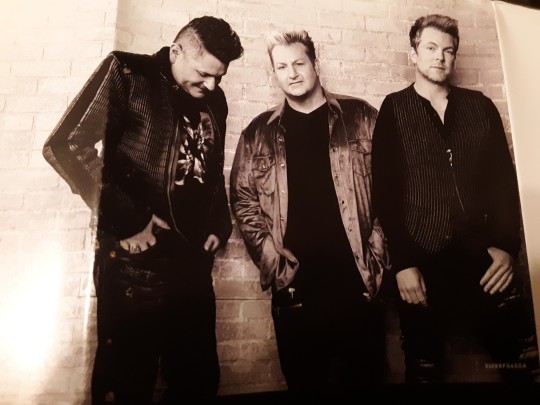
16 notes
·
View notes
Text

“I think about the years I spent just passin' through. I'd like to have the time I lost and give it back to you.” - Rascal Flatts (Bless the Broken Road)
#rascal flatts#gary levox#jay demarcus#joe don rooney#bless the broken road#lyrics#music#littlethoughts
6 notes
·
View notes
Text
Rascal Flatts Adds Dates to Farewell Tour
Rascal Flatts Adds Dates to Farewell Tour

Following the announcement of the RASCAL FLATTS FAREWELL: LIFE IS A HIGHWAY TOUR just last month, the superstar trio has announced more dates due to overwhelming demand. The most awarded group of the past decade revealed two special hometown shows with the news today that they will play Columbus, OH’s Nationwide Arena on 9/25 and they will end the bittersweet nationwide run with a show at…
View On WordPress
#Alternative#Big Machine Label Group#Bless The Broken Road#CBS This Morning#Country#farewell tour#Gary LeVox.#independent music#independent music magazine#Indie#Joe Don Rooney#lie is a highway tour#Live Nation#live nation canada#music magazine#music video#my wish#new album#New Music Video#new release#New Single#North American Tour#North American Tour Dates#Preview#Rascal Flatts#single#Streaming#Vandala#Vandala Magazine
0 notes